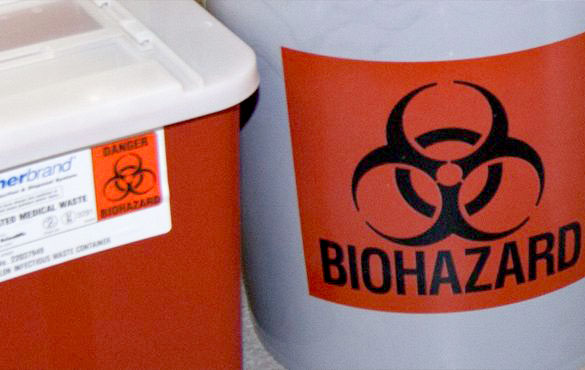Endangered Species
Development of naturalized areas has the potential to impact threatened and endangered species. Under Part 365 of Public Act 451 people are not allowed to take or harm any endangered or threatened fish, plants, or wildlife. Environment, Health & Safety (EHS), Environmental Protection & Permitting Program (EP3) coordinates threatened and endangered (T&E) species site reviews with approved consulting firms to ensure that protected species will not be impacted. If impacts to naturalized areas, wetlands, streams, etc. are anticipated, EP3 will work with an approved consulting firm to determine if there are potential impacts to T&E species. Because many species can only be observed at certain times of the year, it is imperative to discuss potential projects with EP3 as early as possible. For a T&E species review, contact EHEnvironmental@umich.edu
Rules:
T&E Species Review Process
After being contacted regarding a project with the potential to impact T&E species, EHS will contact an approved consulting firm to begin the process of a T&E site review. Typically, the process goes as follows:
- A desktop review is performed by the consultant to determine if there are T&E species within or adjacent to the project site.
- If there are T&E species found in the desktop review, the consultant will perform a site evaluation to determine if there is habitat present on the site to support the T&E species identified in the desktop review. The consultant will issue a memo with the findings, and include a discussion on the likelihood of species identified in the desktop review being present based on habitat.
- Depending on the time of year, and species identified with a potential to be present, the consultant will perform species specific site review.
NOTE: Depending on the time of year, the species specific site review may be performed at the same time as the habitat review. However, if there is potential habitat, but the species is unable to be evaluated due to the season, the project may need to delay start until the appropriate time of the year. A detailed report will be issued with determination of T&E species on-site.
- If there are no impacts to T&E species, the project can move forward.
- If there are potential impacts to a T&E species identified, EH&S and the relevant regulatory agency (Michigan Department of Natural Resources or US Fish and Wildlife Service) will discuss which option will protect the T&E species and allow the project to move forward. To protect the T&E species, the project may need to:
- Obtain a permit if there would be impacts to a regulated T&E species.
- Relocate potentially impacted species (if approved by the regulatory agency).
- Evaluate alternatives that would protect the species.
Migratory Birds
The Migratory Bird Treaty Act (MBTA (16 U.S.C. 703-712)) prohibits the taking of any migratory bird or any part, nest, or egg, except as permitted by regulation. For the purpose of this document, assume all birds are migratory. Implementing regulations define “take” under the MBTA as “pursue, hunt, shoot, wound, kill, trap, capture, possess, or collect.” Only “collect” applies to nests. The MBTA specifically protects migratory bird nests from possession, sale, purchase, barter, transport, import, and export, and take.
The other prohibitions of the MBTA (capture, pursue, hunt, and kill) are inapplicable to nests. While it is illegal to collect, possess, and by any means transfer possession of any migratory bird nest, the MBTA does not contain any prohibition that applies to the destruction of a bird nest alone (without birds or eggs), provided that no possession occurs during the destruction. Some unoccupied nests are legally protected by statutes other than the MBTA, including nests of threatened and endangered migratory bird species and bald and golden eagles, within certain parameters. In situations where it is necessary (i.e. for public safety) to remove (destroy) a nest that is occupied by eggs or nestlings or is otherwise still essential to the survival of a juvenile bird, a permit is available pursuant to 50 CFR parts 13 and 21: the Service may issue a permit to take individual birds. So there is no obligation to relocate migratory bird nests, but impacting occupied nests with eggs or young is prohibited without first obtaining a permit.
NOTE: Similar to the Indiana Bat, potential impacts to Migratory Birds can typically be avoided if trees and brush capable of supporting nesting birds are removed before April 15th and after August 15th.





